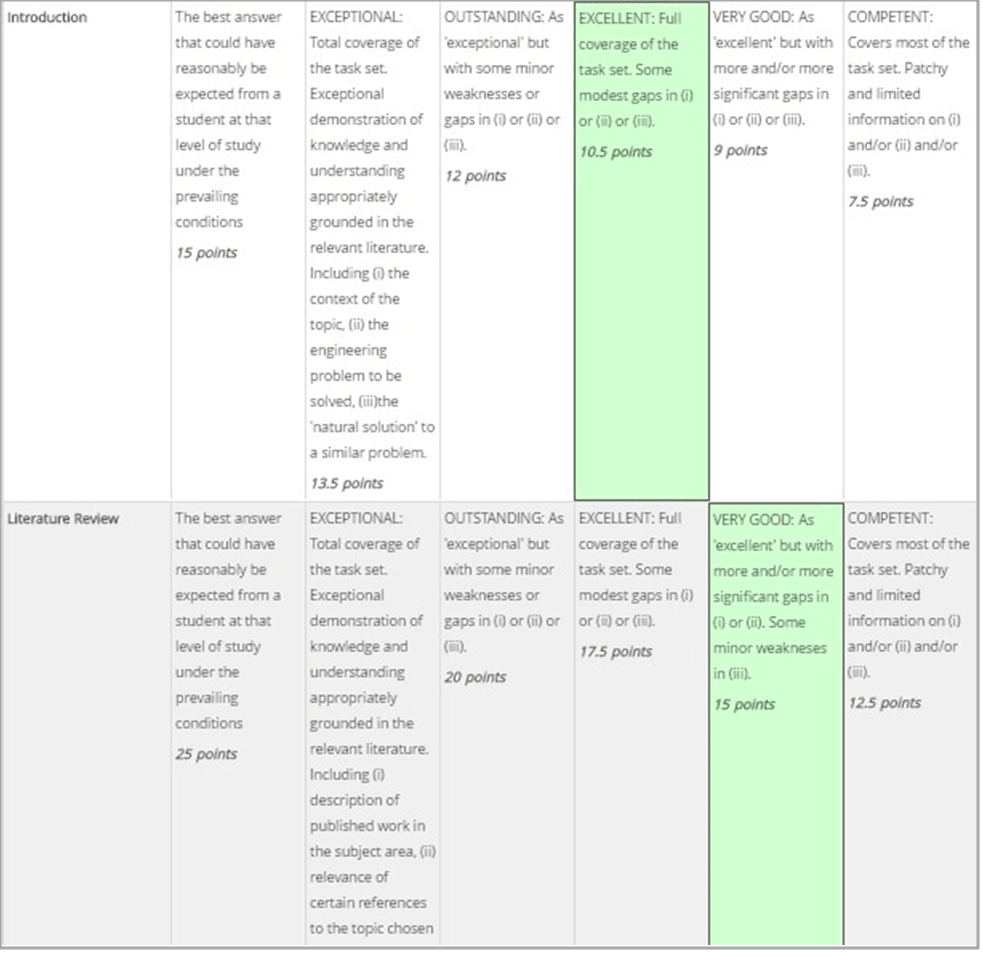Published on: 04/01/2024 · Last updated on: 02/09/2024
Dr Sabina Gheduzzi – Dept of Mechanical Engineering
Background context
A rubric is a set of criteria to show students what is expected of them in an assessment. It takes the form of a series of criteria or learning objectives, and a description of the quality standards which the assessor will use when evaluating the student’s work.
Dr Sabina Gheduzzi (Department of Mechanical Engineering) uses a rubric to ensure marking is consistent and objective. The assessment is open ended (there is no definitive solution). Students don’t have previous in-depth experience of this type of assessment. They complete a summative assessment, and then a further assessment in the same format, which gives them a chance to apply the feedback they received.
- Biomimetics, Final Year option unit
- 25-80 students (numbers vary year on year)
Students complete a literature review, with a specific emphasis on critical appraisal, paving the way for their final year dissertation

Purpose
Marking with a rubric brings coherence and consistency to marking, ensuring fairness. The rubric contains a detailed description of each assessment criteria and level. Providing the rubric to students in advance supports them in approaching the assessment. Sabina developed the assessment criteria specifically for this assessment.
Process
Sabina set up a rubric in Moodle to carry out marking online. The rubric provides structured feedback to students, and calculates a mark for the assignment. Sabina also provides overall feedback comments and annotations on the submitted assignment. Students can view this with their assignment submission. For more guidance, see the Advanced Grading in Moodle guide.
- It takes time to design and set up the rubric first time around.
- Subsequently, the marking process takes a similar amount of time to marking on paper, but provides more structured, in depth feedback to students.
- It takes just a few moments to create a new assignment submission point each year for the new cohort of students, re-using the rubric.
Pros & Cons
Recommendations
Sabina provides some further advice if you are considering implementing this approach
- Review examples of rubrics to see how to adapt one for your purposes
- When marking, focus on the descriptors not the marks – this can give you greater confidence in your marking
- You can show grade level descriptors in decreasing order – this keeps focus on what’s required for the higher levels, and gives students something to aim for
- Rubrics could be a good tool for improving consistency between markers, but this needs careful preparation. It would be useful for a marking team to practice marking and moderation together using the rubric to calibrate their approach
Further reading
Brookhart, S.M., Chapter 1. What Are Rubrics and Why Are They Important? [Online] In: How to Create and Use Rubrics for Formative Assessment and Grading, USA: ASCD. Available from: www.ascd.org [Accessed 04/01/2024]